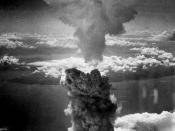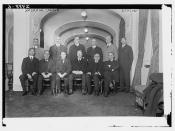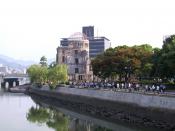The human mind cannot comprehend the split-second deaths of 100 000 people when the atomic bomb hit the people of Japan in August, 1945. However this event, which has changed the world forever, can be relived through the lives of six survivors in John Hersey's Hiroshima. Expository texts such as the aforementioned often present powerful social issues which challenge not only the reader from the contemporary Western culture but also the reader from the 1946 American society. Hersey employs various techniques, including point of view, tone, emotive and descriptive language to position readers to respond to changing priorities, Japan's reaction to the crisis and moral and ethical issues.
Up until Hersey's account of the Hiroshima bombing, texts that were presented to readers were fabricated propaganda and contained the preconception that dropping the bomb was not ethically wrong. This influenced readers in that context to feel as if the Americans had taken the right action to end the war.
However, Hersey writes Hiroshima in the point-of-view of six ''hibakusha's'', focussing entirely on their stories of endurance and hope throughout the atomic blast. As he writes in such a journalistic style and detaches any feelings or opinions he may have about the event, he forces readers to draw their own conclusions from the facts and question the morality of the Americans and their president. Quoted from Rhodes, the making of the Atomic Bomb from a scientist who took part in assembling the bomb, "...I still remember the feeling of unease, even nausea, when I saw many of my friends rushing to celebrate. Of course we were exalted by the success of our work, but it seemed rather ghoulish to celebrate the sudden death of a hundred thousand people, even if they were "enemies"'. Hersey portrays the six characters not as enemies,


